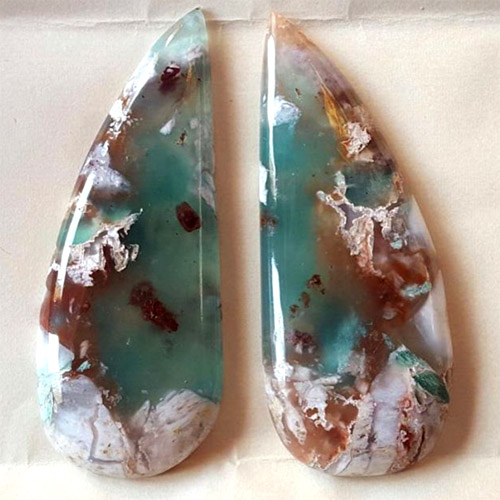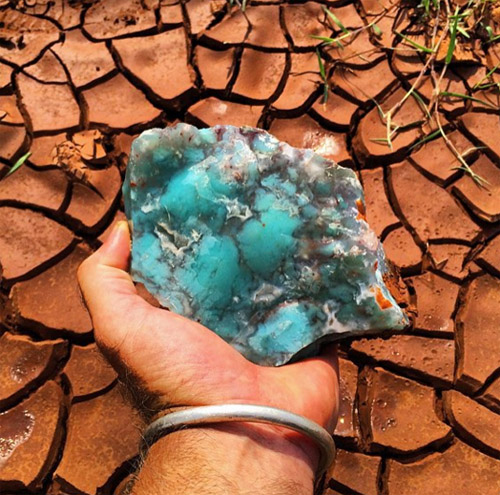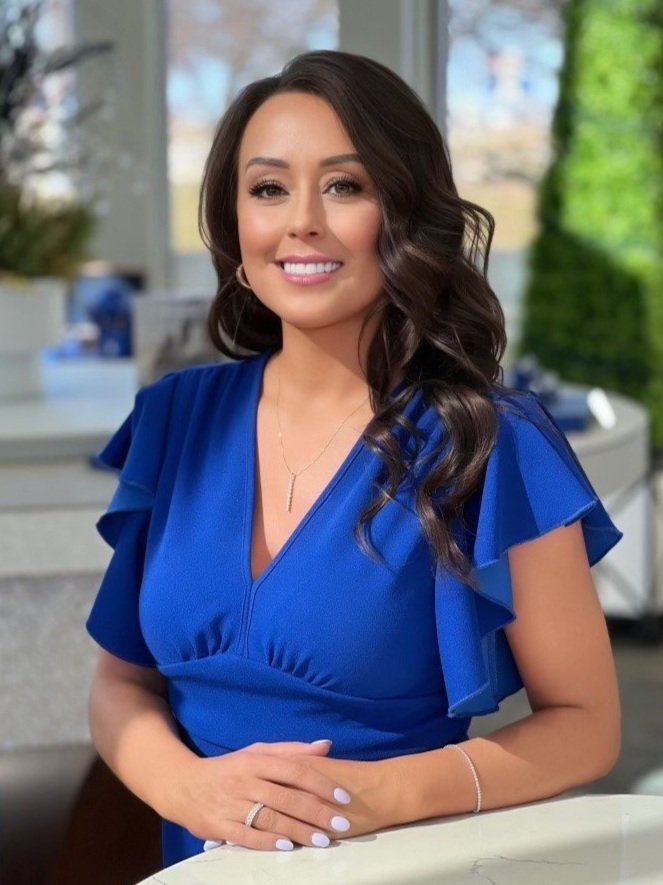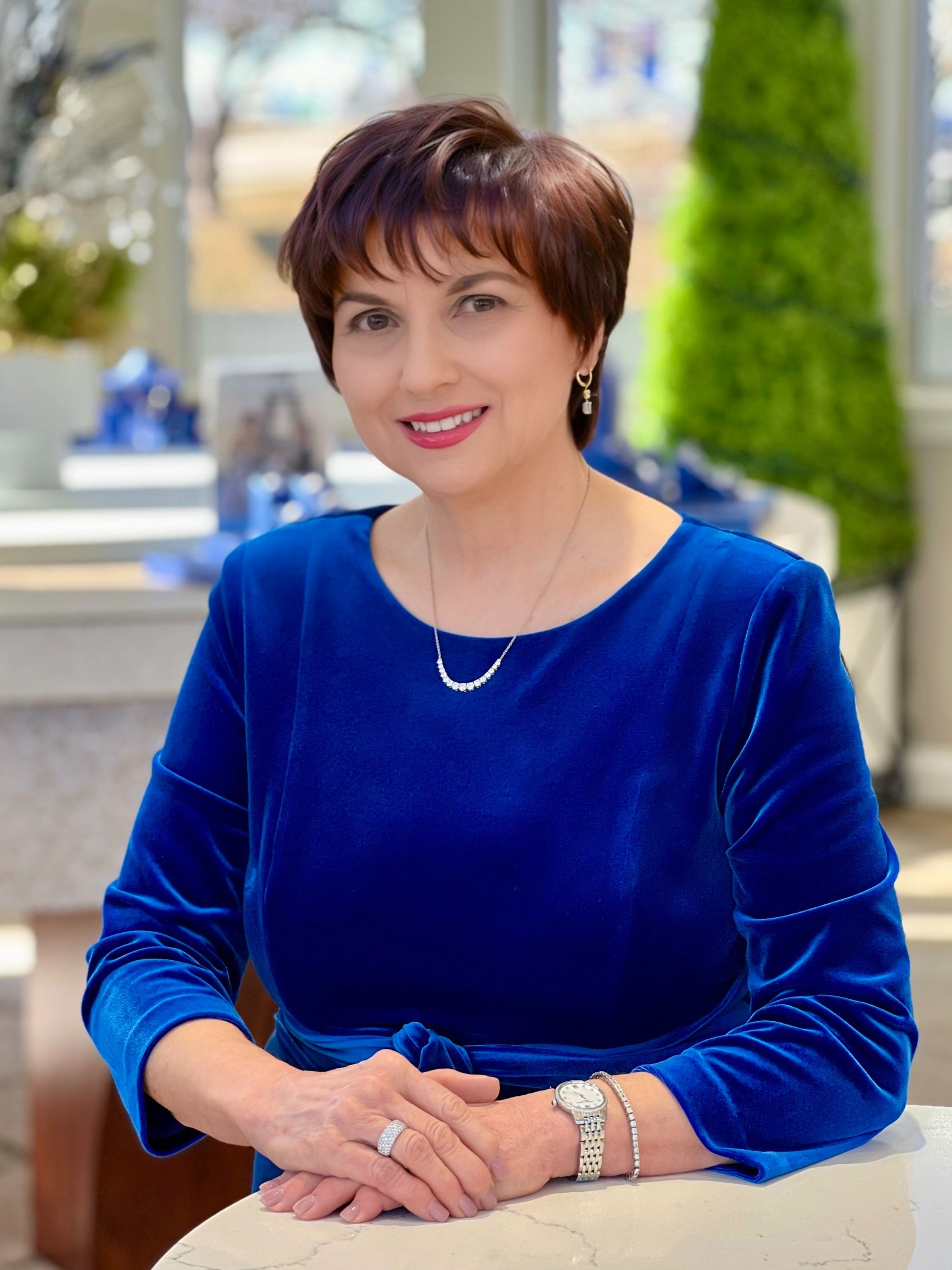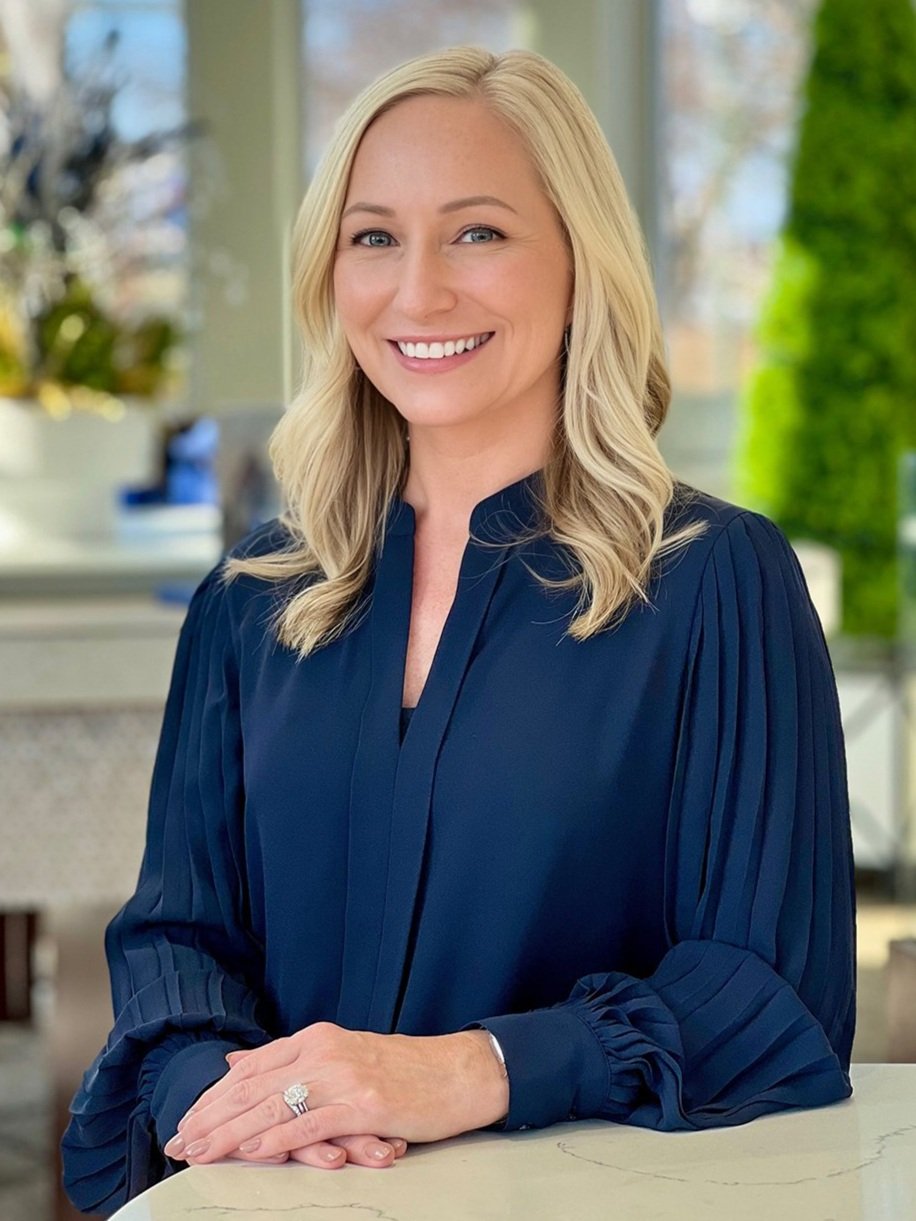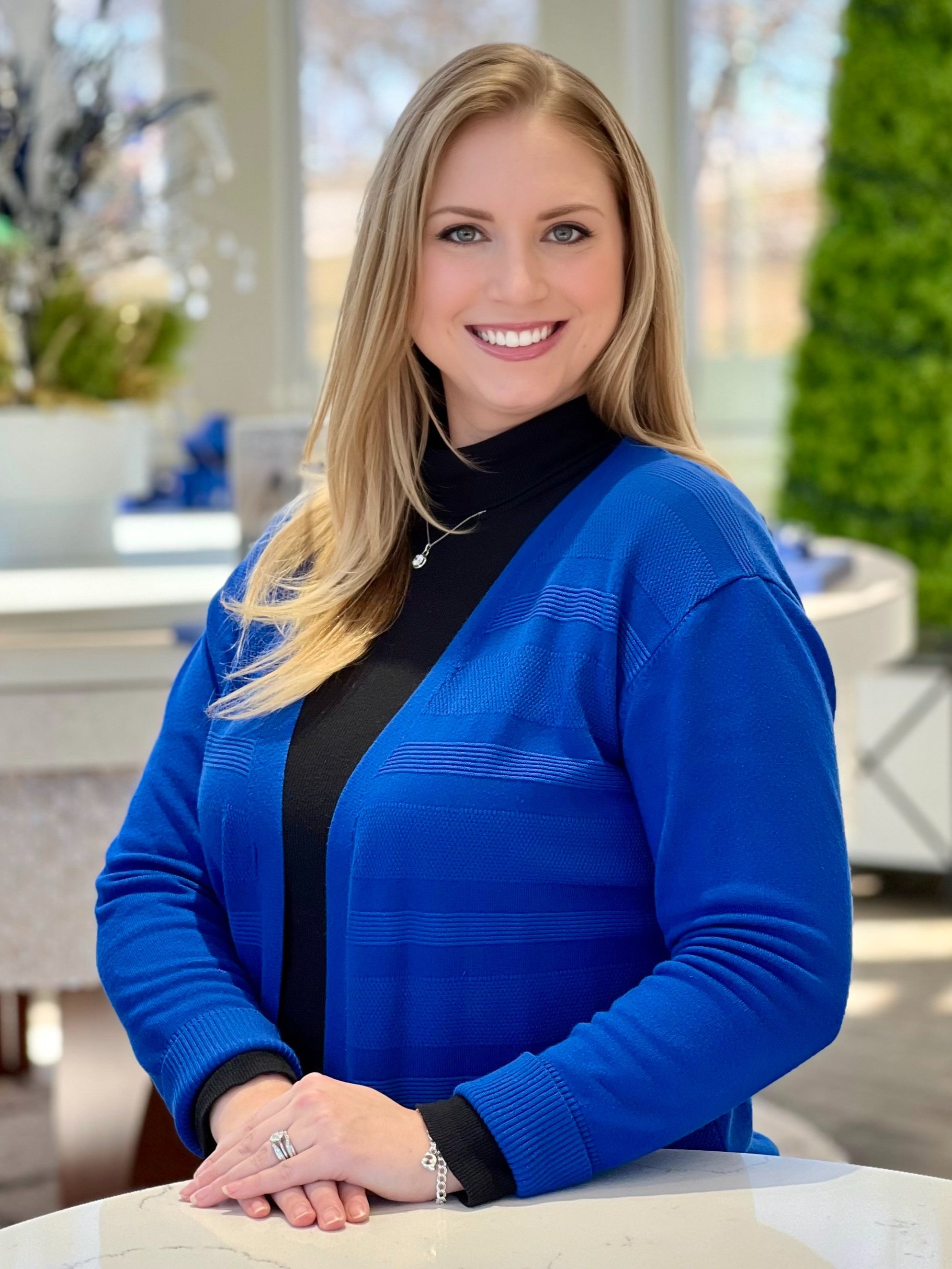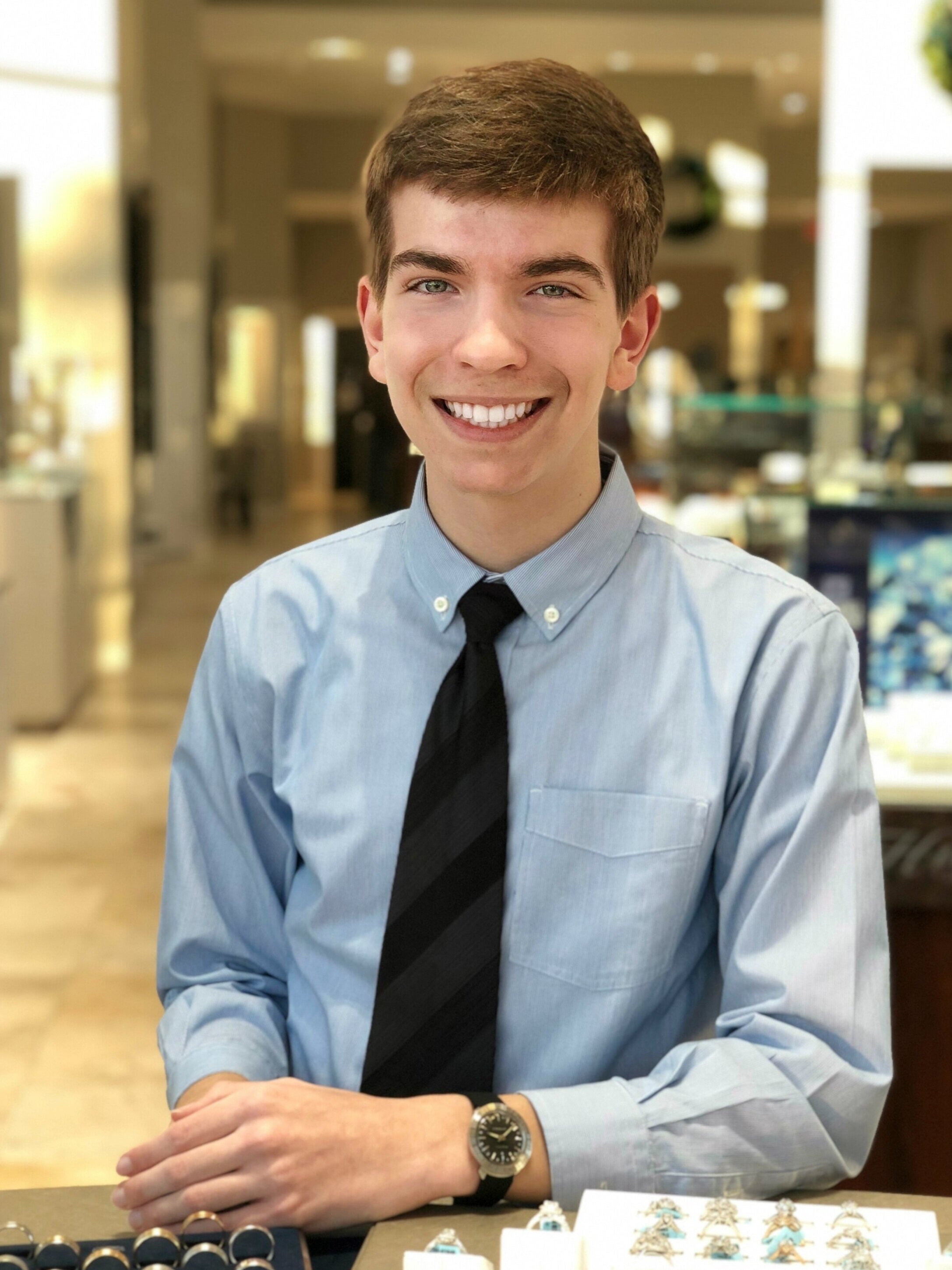The Gemological Institute of America has just identified a new variety of chalcedony, a fascinating discovery that incorporates the colors of the sky, the sea and the earth. Dubbed "Aquaprase" by gem explorer Yianni Melas, the translucent bluish-green specimens have been compared to the Aegean Sea when viewed from an airplane.
Although the rough material is available in "clean" varieties that are either vibrant blue-green or baby blue "with clouds," Melas prefers the material with matrix, which is part of the surrounding rock. Melas told jewelry trade magazine JCK that the matrix looks more natural and gives the finished piece more character.
“We took one gem crystal and instead of trying to match it after we cut it, we sliced in half so both sides are a mirror image," he told JCK. "The matrix on one side matches the matrix on the other. It’s very, very good for earring sets. The matching matrix actually adds to the beauty... People know immediately this material is natural because each piece is unique. Every piece is unusual.”
The Greece native came up with the name "Aquaprase" by combining the word "aqua" (for the blue sea) with "phrase" (meaning green in Greek).
The GIA reported that the bluish-green chalcedony gets its unique color from traces of chromium and nickel within the chemical makeup of the quartz stone. Previously identified varieties of chalcedony occurred in yellowish-green and greenish-blue colors.
Melas first encountered "Aquaprase" in Africa about two years ago, in a location known for opal production (he did not disclose the country). He told JCK that he spied this new gem while visiting a friend's hut. The specimen was displayed on a shelf and was in poor condition.
“I couldn’t explain why I thought it was different,” he told JCK. “It is like a third eye. I have seen thousands of stones and you get that feeling. When I picked up the stone, I had the chills, a funny feeling. That feeling is something you have to follow.”
He dug and trench and was able to find more examples of this type of gem, but he wasn't sure what it was, exactly.
Some associates guessed it was chrysocolla; others said is was blue-green opal. Most thought it was chrysoprase.
Seeking to get a final, conclusive word on what he held, Melas sent a sample to the GIA.
“I heard nothing for three months,” he told JCK. “Then I got a phone call that said we found something incredible. It’s not a chrysoprase. It is not a chrysocolla. It’s a chalcedony that has never been discovered.”
Melas' reaction? “That is when I started jumping up and down,” he said.
Credit: Photos by Yianni Melas via Instagram/gemexplorer


